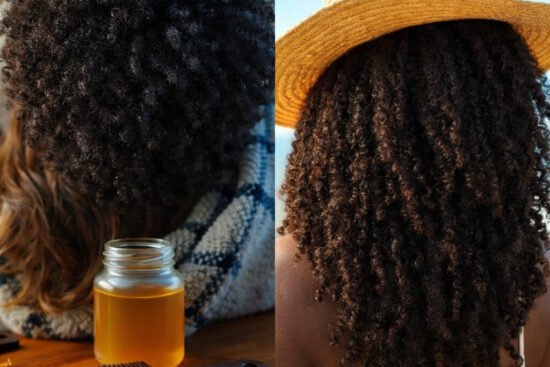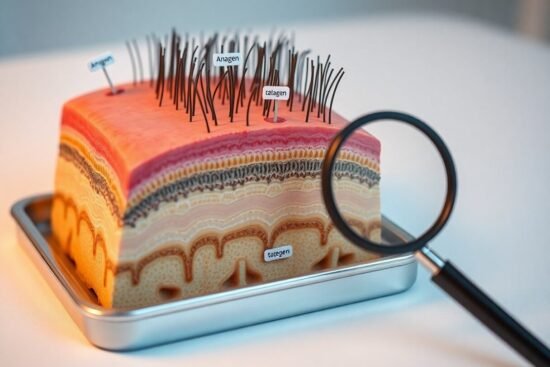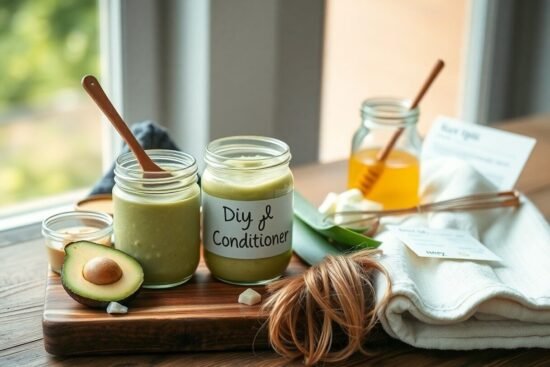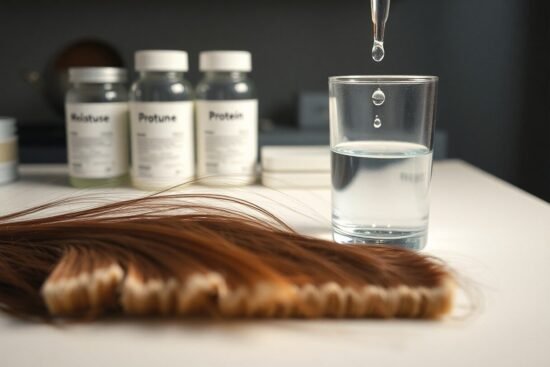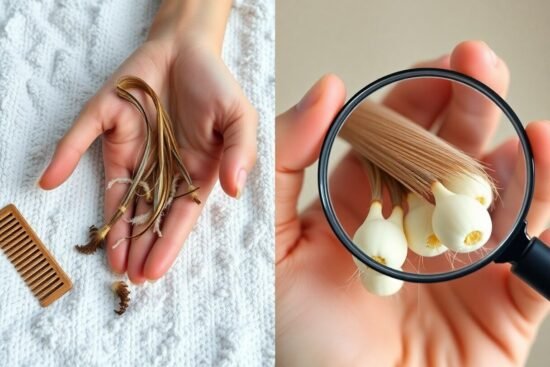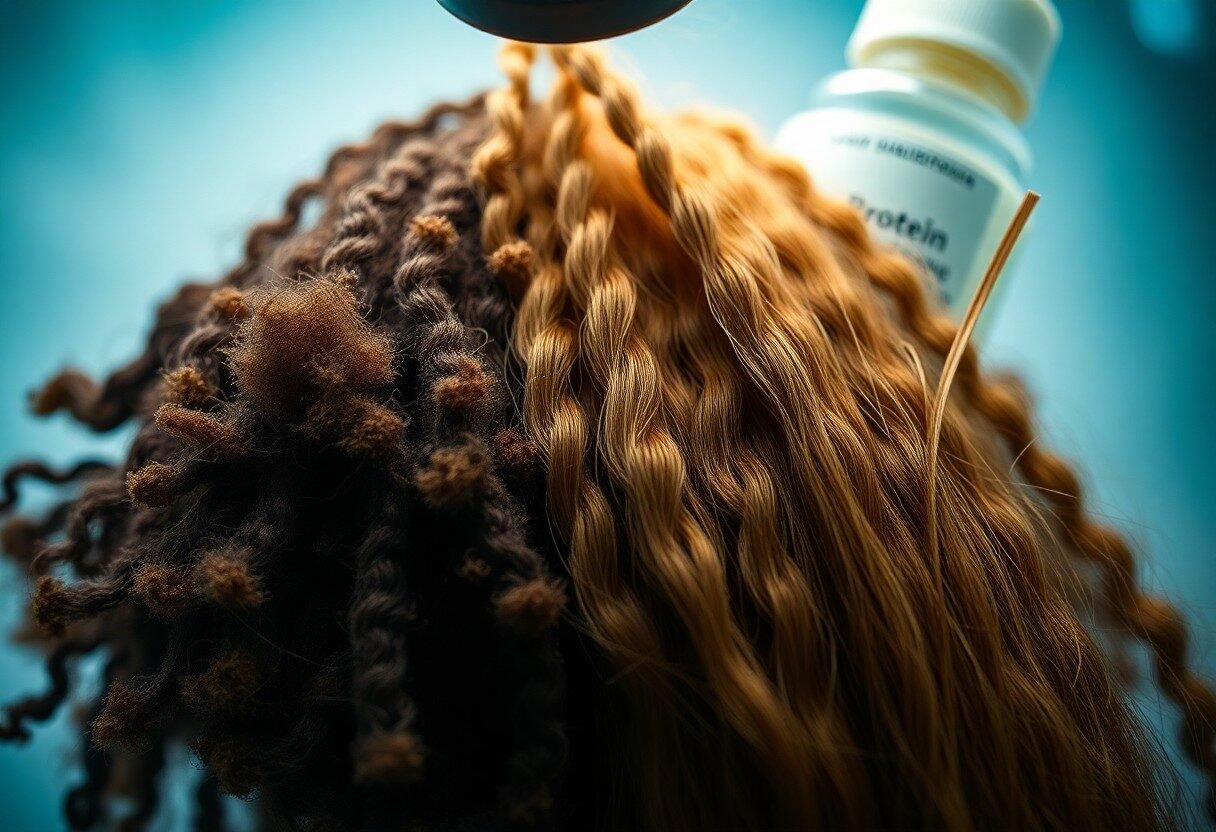
Protein treatments are vital for enhancing the health and resilience of your natural hair. If you’ve been experiencing breakage or weakness, incorporating protein treatments can revolutionize your hair care routine. These treatments replenish lost protein, fortifying the hair strands and preventing damage. However, it’s important to balance protein with moisture to avoid overloading your hair, which can lead to stiffer, brittle locks. In this post, I’ll guide you through understanding how protein treatments work and the best practices to ensure your natural hair remains vibrant and strong.
Key Takeaways:
- Protein treatments help to repair and strengthen the hair structure by filling in gaps in the protein matrix.
- Natural hair tends to be more susceptible to damage due to its unique texture and porosity, making protein treatments beneficial for maintenance.
- Overuse of protein treatments can lead to brittleness, so it is important to balance with moisture treatments.
- Different types of protein treatments, such as hydrolyzed keratin or silk protein, target various hair needs and conditions.
- Protein treatments can improve elasticity, helping to reduce breakage and promote healthier hair growth.
- Regular assessment of the hair’s condition can guide the frequency and type of protein treatment needed, optimizing results.
- Incorporating protein treatments into a hair care routine can enhance overall manageability and styling of natural hair.
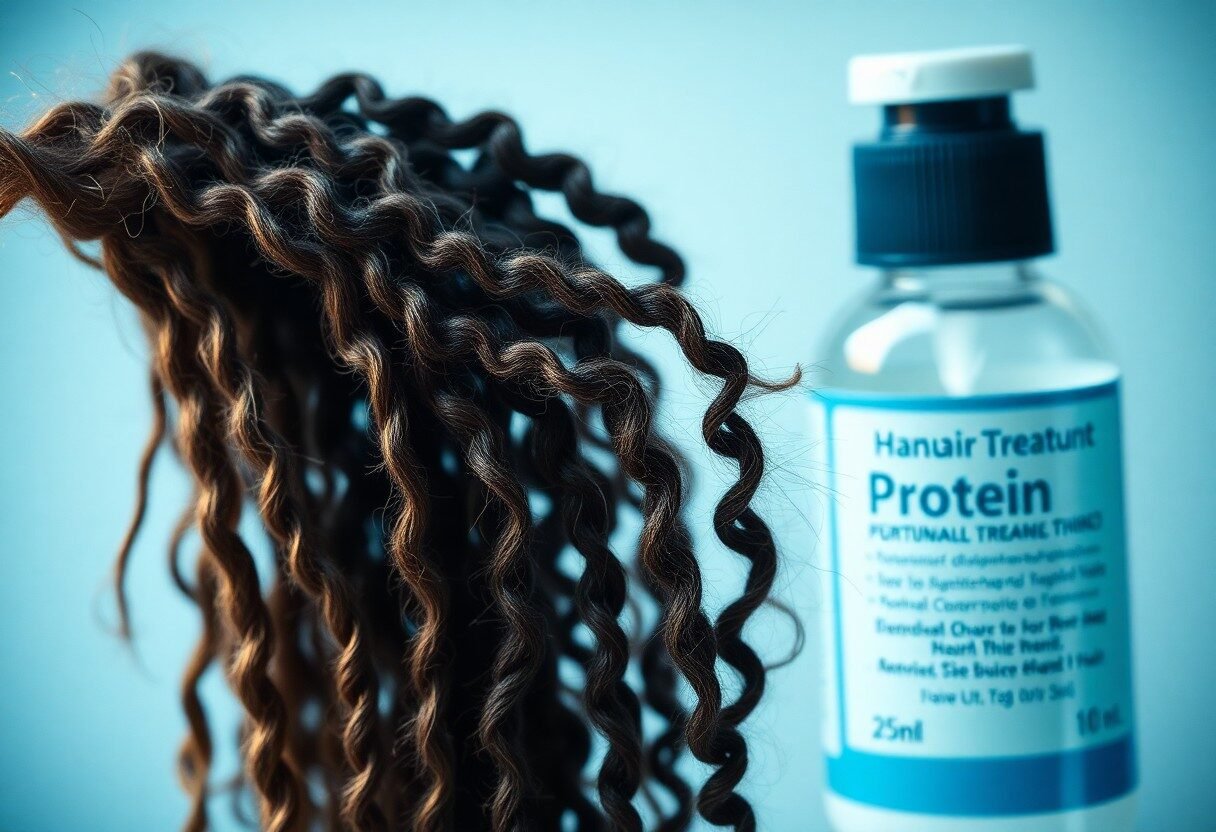
The Science Behind Protein Treatments and Hair Structure
Understanding the science behind protein treatments reveals their efficacy in maintaining healthy hair. Hair is primarily composed of keratin, a fibrous protein responsible for its strength and resilience. When you apply protein treatments, you’re imperatively replenishing the protein content in your hair, thus enhancing its structure and durability. These treatments work by penetrating the hair shaft, targeting areas that lack protein and repairing damage caused by environmental factors and chemical processes. The result is a more robust and revitalized hair appearance.
The Role of Keratin in Hair Health
Keratin is the building block of hair, making up approximately 95% of its structure. This protein not only provides strength but also contributes to the natural shine and elasticity of your hair. Over time and with exposure to damage, the levels of keratin can diminish, leading to weakness and breakage. Incorporating keratin-rich protein treatments into your hair care routine helps restore these vital proteins, promoting healthier hair that can withstand daily stressors.
How Protein Reinforces Cellular Bonds
Protein treatments work by reinforcing cellular bonds within the hair shaft. With each application, proteins act like a protective shield, enhancing the integrity of your hair. This process begins with the absorption of hydrolyzed proteins, which are smaller molecules that can penetrate deeply into the hair cuticle. Once inside, these proteins fill voids and gaps caused by damage or chemical processing, thus improving the overall strength and elasticity of the hair. This repair mechanism minimizes breakage and creates a smoother texture, facilitating better manageability and a healthier appearance.
Transformative Effects: When and Why to Use Protein Treatments
Protein treatments work wonders for your natural hair, particularly when strands begin to feel weak, limp, or look damaged. These treatments restore elasticity and strength, making them necessary tools in your hair-care regimen when facing issues like breakage or frizz. I often find that when hair shows signs of wear, introducing protein into your routine can significantly transform the texture and health of your locks, paving the way for luscious, resilient hair.
Identifying Signs of Protein Deficiency in Natural Hair
Natural hair that exhibits excessive shedding, becomes overly stretchy, or feels weak and mushy often signals a protein deficiency. These symptoms indicate that your strands lack the structural integrity needed to withstand daily styling and environmental factors. Watch for these telltale signs, as they may suggest a need for a protein boost to revive the strength and resilience of your hair.
Optimal Frequency and Timing for Treatment Applications
The optimal frequency for protein treatments usually depends on your hair type and condition; generally, applying a protein treatment every 4 to 6 weeks is suitable for most people. Those with weak or damaged hair may benefit from treatments every 2 to 4 weeks. Always consider your routine and protein sensitivity—overuse can lead to rigidity and dryness, so a personalized approach often yields the best results.
Balancing protein treatments involves understanding your hair’s specific needs. For example, if you’re styling regularly or exposed to heat, increasing treatment frequency could be beneficial. Conversely, if your hair feels unusually stiff or breaks easily after protein applications, it might be time to reduce the frequency or switch to lighter protein options. Keeping track of your hair’s responsiveness will help you establish a consistent, effective routine that promotes healthy, strong hair without compromising moisture levels.
Popular Protein Treatments: Dissecting the Ingredients
Various protein treatments available on the market each have unique formulations and benefits targeted specifically at strengthening natural hair. From moisture-boosting keratin to nutrient-rich wheat protein, these treatments serve differing purposes. I often find myself comparing options to see which ingredients will yield the best results for my hair type. It’s clear that informed choices lead to more effective treatments, so let’s explore the key proteins and the differences between natural and synthetic options.
Key Proteins to Look For and Their Benefits
Certain proteins are hallmark ingredients in many treatments, each contributing specific benefits. Keratin, for example, is known for its ability to restore strength and resilience; soy protein enhances moisture retention; and silk protein provides a luxurious softness. These proteins work synergistically to fortify hair, helping to minimize breakage and improve overall hair health.
Comparing Natural vs. Synthetic Protein Treatments
The debate between natural and synthetic protein treatments often comes down to effectiveness and personal preference. Natural protein treatments utilize ingredients directly from nature, making them less likely to cause irritation for sensitive scalps. Synthetic options, while they can yield immediate results via chemical compounds, may introduce harsh additives that lead to long-term damage. Each choice has its advocates, but I encourage you to assess your unique hair needs.
Natural vs. Synthetic Protein Treatments
| Natural Protein Treatments | Synthetic Protein Treatments |
|---|---|
| Derived from plant or animal sources, such as keratin or quinoa. | Formulated using man-made chemicals and compounds to achieve quicker results. |
| Generally gentler on the hair and scalp. | Can provide immediate smoothing and strengthening effects. |
| May take longer to see results, but often invest in holistic hair health. | Results can be fast, but may require more frequent applications. |
Natural treatments are often lauded for their gentleness on hair and scalp, minimizing irritation while promoting health from the inside out. While synthetic options can deliver quick fixes, including smoothness and shine, long-term usage may lead to problems. Finding a balance is vital; I often blend both methods to capitalize on their strengths and ensure my natural hair remains strong and vibrant. I encourage you to experiment with this balance to discover what works best for your unique texture and lifestyle.
Integrating Protein Treatments into Your Hair Care Routine
To effectively incorporate protein treatments into your hair care regimen, start by assessing the needs of your hair. You can opt for a light protein treatment every four to six weeks or a stronger formulation if your hair is particularly damaged. Always follow the treatment with a moisturizing conditioner to restore balance, as too much protein can lead to dryness. Tailoring the frequency and strength of treatments to your hair’s condition ensures you achieve optimal results without compromising its health.
Best Practices for Application and Results
For the best results with protein treatments, apply them to clean, damp hair. Use a wide-tooth comb to ensure even distribution, focusing on areas that require the most attention. Allow the treatment to sit for the recommended time indicated on the product label; this can vary from 15 to 30 minutes. Finally, rinse thoroughly with cool water to seal the cuticle and enhance shine while detangling gently to avoid breakage.
Complementary Products That Enhance Effectiveness
Pairing protein treatments with complementary products can amplify their effectiveness. A good moisturizing conditioner, deep conditioning masks, and leave-in conditioners formulated with nourishing ingredients can help maintain hair balance post-treatment. Look for products that contain natural oils and humectants to lock in moisture, creating a perfect synergy with protein-based treatments.
For example, using a deep conditioning mask infused with argan oil or sheer butter immediately following a protein treatment can restore hydration, preventing potential brittleness. Such products enhance the benefits of your protein treatment while ensuring that your hair remains nourished and strong. I find that incorporating these hydrating elements keeps my hair resilient and enhances its overall health, allowing me to enjoy the full advantages of my hair care routine.
Myth-Busting: Common Misconceptions About Protein Use
Misunderstandings surrounding protein treatments can often discourage you from incorporating them into your hair care routine. Many assume that using protein will always lead to damaged hair, while others think that all hair types can benefit equally from protein. In reality, the right protein treatment, when used correctly, can significantly enhance the strength and resilience of your natural hair. The key lies in understanding your unique hair needs and how protein fits into your regimen.
Debunking ‘Protein Overload’ Myths
The idea of ‘protein overload’ causing severe brittleness or breakage is widely circulated, yet often exaggerated. In truth, most healthy hair types can tolerate regular protein treatments, especially if they are balanced properly. Each individual’s hair may react differently, so the focus should be on consistency and paying attention to how your hair responds rather than fearing protein altogether.
Understanding the Balance Between Moisture and Protein
A harmonious balance between moisture and protein is necessary for optimal hair health. Overemphasis on one without the other can lead to problems such as dryness or weakness. For instance, while protein strengthens hair structure, moisture keeps it flexible and prevents breakage. By incorporating both elements in your hair care routine, you can achieve the ideal state of hydration and strength.
To maintain that balance effectively, consider the specific needs of your hair type and condition. If your hair feels dry and brittle, it may require more moisture-focused products. Conversely, if you’re experiencing excessive elasticity and limpness, increasing protein intake may be necessary. Regularly assessing your hair’s response to products will help you tailor your regimen, ensuring neither moisture nor protein is neglected. I recommend alternating moisture and protein treatments based on the season or your hair’s condition after each wash for optimal results.
Summing up
Upon reflecting on the importance of protein treatments for strengthening natural hair, I believe it’s important for you to incorporate them into your hair care routine. These treatments provide the necessary building blocks to reinforce your hair’s structure, enhancing its resilience against damage. By understanding your hair’s unique needs, you can select the appropriate protein treatment that supports your hair type, ultimately promoting overall health and vitality. Embracing these treatments not only helps in strengthening your hair but also fosters a deeper bond with your natural texture.
FAQ
Q1: What are protein treatments, and how do they work for natural hair?
A: Protein treatments are specialized hair care products designed to penetrate the hair shaft and rebuild the protein structure of the hair. Hair is made primarily of a protein called keratin. When hair becomes damaged due to environmental factors, heat, or chemical processes, it loses its natural strength and elasticity. Protein treatments help to restore the balance of proteins, strengthening the hair and improving its overall health and resilience.
Q2: How often should I use protein treatments on my natural hair?
A: The frequency of protein treatments can vary depending on the individual’s hair type and condition. Typically, using a protein treatment every 4 to 6 weeks is recommended for most hair types. However, if your hair is particularly damaged or weak, you may benefit from more frequent applications. It’s important to observe how your hair responds and adjust the frequency accordingly to avoid overloading it with protein.
Q3: What are the signs that my natural hair needs a protein treatment?
A: Signs that your hair may need a protein treatment include excessive breakage, split ends, limp or lifeless strands, and a stretched or gummy consistency when wet. If your hair feels remarkably soft and lacks elasticity, it’s a strong indication that it requires protein to restore strength. Regularly assessing your hair’s texture and health can help you determine when to apply a treatment.
Q4: Can protein treatments be used on all hair types?
A: Yes, protein treatments can generally be used on all hair types, including curly, straight, coily, and wavy hair. However, different hair types may require different formulations of protein treatments to achieve optimal results. It’s important to choose a treatment specifically designed for your hair type and to follow the instructions carefully to avoid adverse reactions.
Q5: What ingredients should I look for in a protein treatment for natural hair?
A: When identifying a protein treatment, look for ingredients such as hydrolyzed keratin, wheat protein, soy protein, or silk protein, as these can help strengthen and repair the hair. Additionally, ingredients that offer moisture like oils or humectants can help balance the protein load, ensuring that the hair remains hydrated while it benefits from the protein treatment.
Q6: How can I incorporate protein treatments into my hair care routine?
A: Incorporating protein treatments can be done by scheduling them during your regular wash day routines. After cleansing your hair, apply the treatment as directed, focusing on the mid-lengths to ends. Allow it to sit for the recommended time before rinsing and following up with a moisturizing conditioner. Keeping track of your hair’s response will help you adjust how often and when to use the treatment effectively.
Q7: Can overuse of protein treatments harm my natural hair?
A: Yes, overuse of protein treatments can lead to a condition known as protein overload, which makes hair feel stiff, brittle, and prone to breakage. It’s important to maintain a balance between moisture and protein in your hair care routine. If you notice your hair becoming hard and losing its natural softness, it may be time to reduce the frequency of protein treatments and focus more on hydrating conditioners and moisture-rich products.






